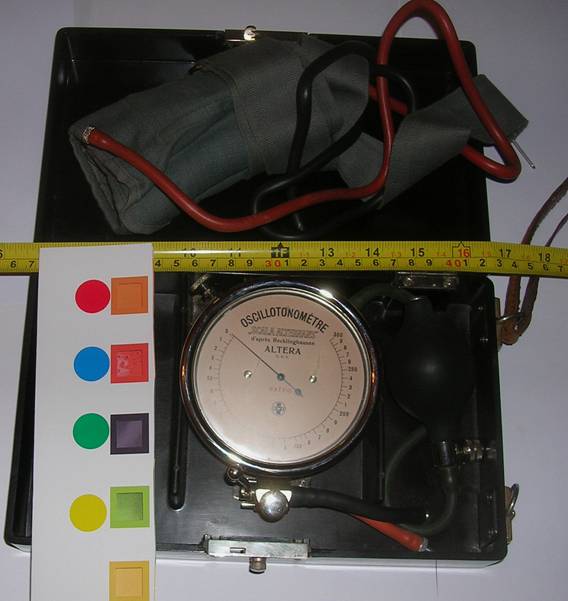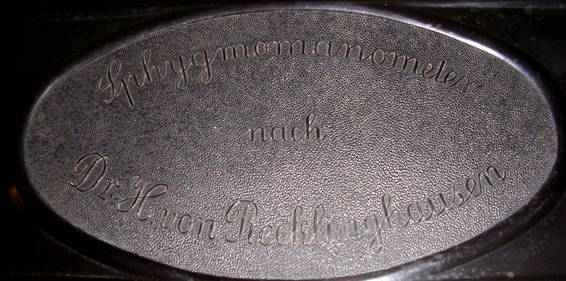
South Australian Medical Heritage Society Inc
Website for the Virtual Museum
Home
Coming meetings
Past meetings
About the Society
Main Galleries
Medicine
Surgery
Anaesthesia
X-rays
Hospitals,other organisations
Individuals of note
Small Galleries
Ethnic medicine
- Aboriginal
- Chinese
- Mediterran
Owner: Dr, Richard Bowering
Apparatus: Aneroid Sphygmomanometer (circa 1930)
Size: 10 x3 x 6 inches.
Components: Bakelite box, aneroid manometer, cuff, rubber hoses & inflation bulb
The first recorded blood pressure measurements were made in animals. In England the Reverent Stephen Hales used a copper pipe inserted into an artery and connected to a vertical glass tube. The height of the blood column then reflected the blood pressure. This method had no practical use in medicine.
In 1855 Karl Vierordt found that the radial pulse could be obliterated by inflating a cuff around the upper arm. Several models were developed over the next decade, until in 1896 when Scipione Riva-Rocci designed the precursor of the modern mercury manometer.
Korotkoff was the first to record the sound produced during deflation of the cuff. Aneroid manometers are a variant of the mercury ones, and currently there are numerous digital types.
Aneroid sphygmanometer
in case
Sphygmanometer case badge “Dr.h. Von Recklinghausen”
The sphygmomanometer has a large and a smaller cuff and a large dial for reading the blood pressure, a bleed valve and a control lever. The lever switches the pressure between the two cuffs The use of the lever and the small cuff enables the blood pressure to be determined without using a stethoscope, by observing oscillations of the needle on the dial.
-o0o-

